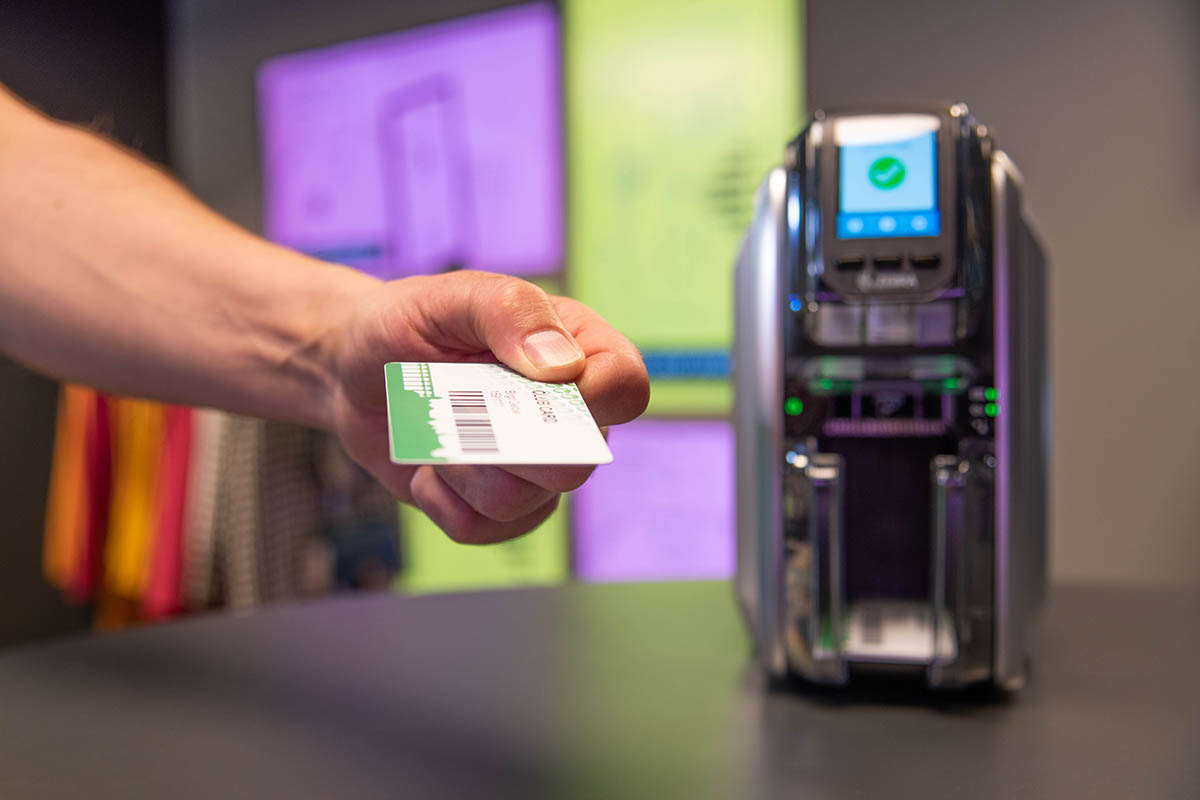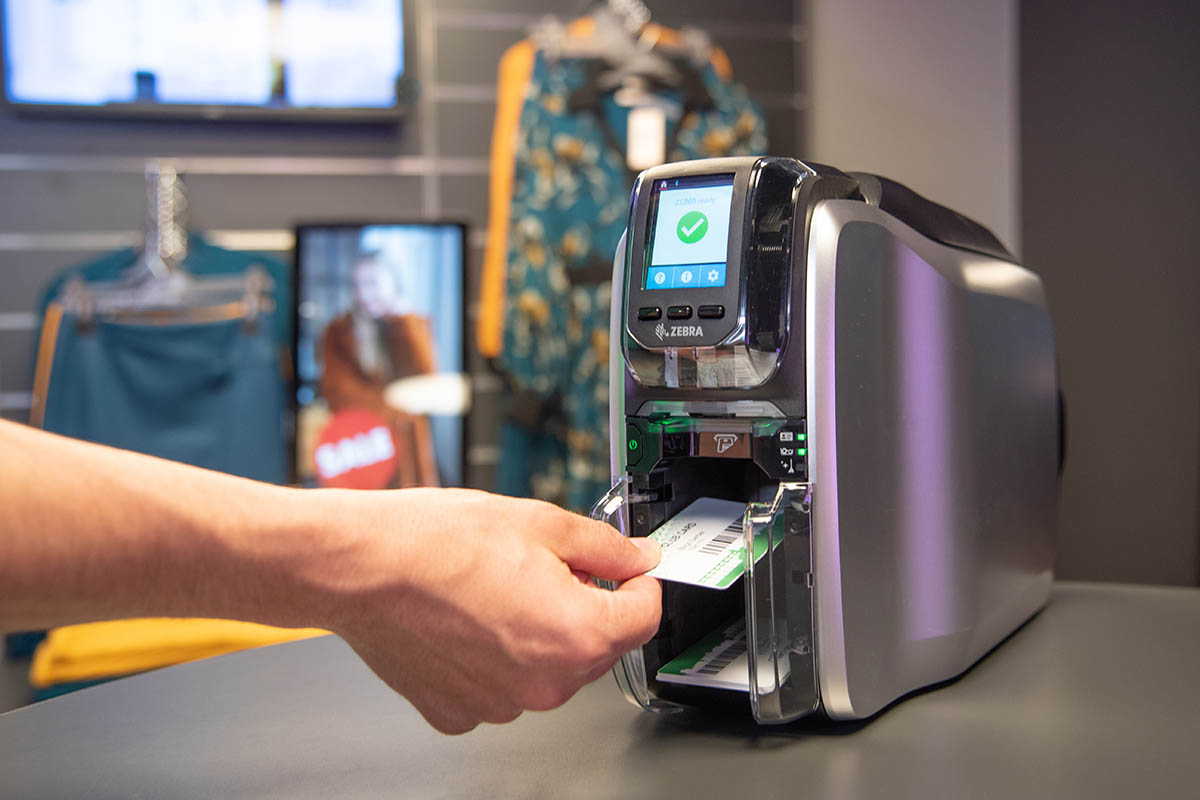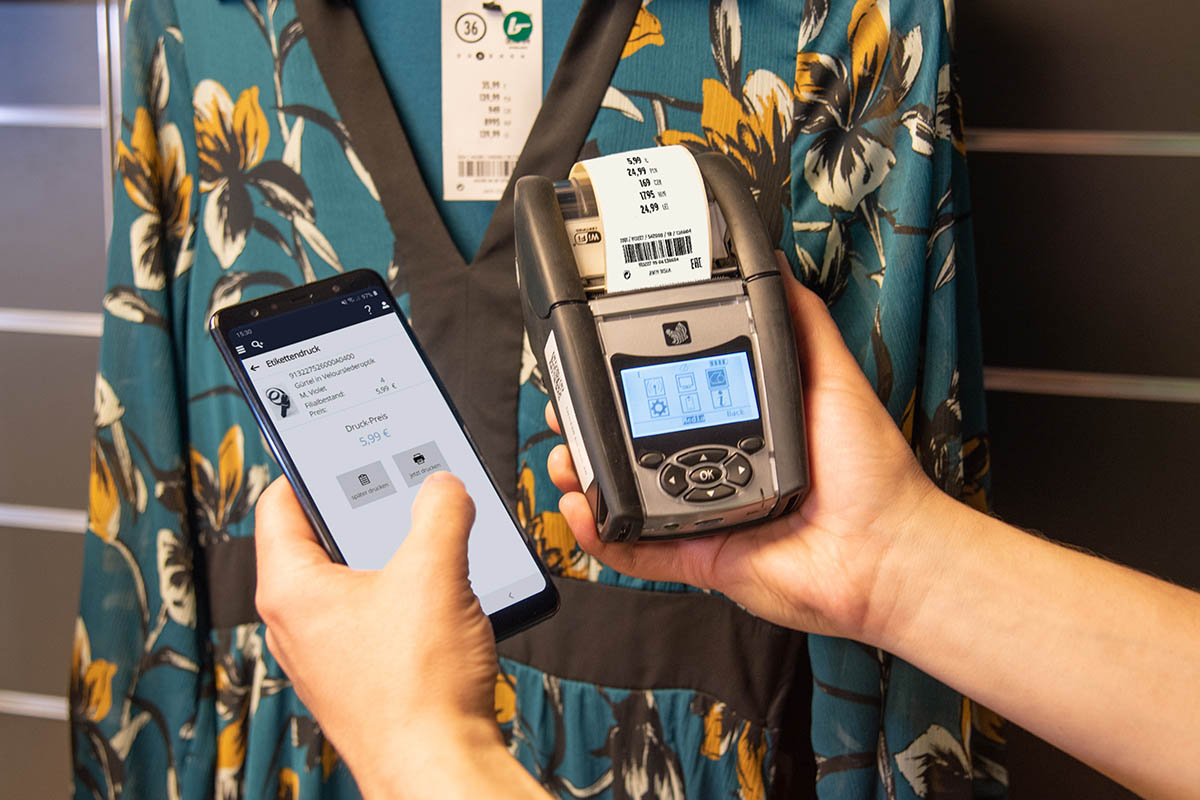
We define Output Processing (OPS) as the generation of tasks or documents that are then automatically sent to a specific destination. This can be, for example, a label that is output from a printer, but also a PDF document that is generated and then sent by email. The decisive factor is the automation of a "job".
However, OPS can do much more than 'just print'. Below we present 4 practical examples.
1. Print customer cards directly on site with the Zebra ZC300
One example would be the issue of a new customer card. The Zebra ZC300 card printer, for example, is well suited for this. The device is compact, intuitive to use and prints standardized plastic card blanks of various thicknesses on one or both sides with CMYK transfer film. Special prints such as magnetic strips or metallic foils are also possible.
In connection with an output processing job, new customer cards can be printed on site and given to the customer at the same time. The time-consuming mailing of letters is no longer necessary.
Multiple cards can also be created quickly using Printer Language. This case is conceivable, for example, for personalized visitor badges in the event area or at the reception of a company.

2. Label prints with Zebra ZQ610
The Zebra ZQ610 mobile label printer for 48mm wide labels is particularly suitable for use directly on the retail area. The device is especially reliable thanks to the improved battery life and the 'instant-ready' function after switching on. It can be controlled via Bluetooth and the W-LAN network, among other things.
Together with the OPS function, new labels can be created quickly, easily and with just a few clicks, for example if large quantities of goods have to be re-labeled for a SALE campaign.

3. Omnichannelprozesse
Ein weiteres Beispiel für den Einsatz von Output Processing sind Omnichannelprozesse. Bei Services wie Click & Collect und Click & Reserve erwarten Kunden, dass sie stets über den aktuellen Stand ihrer Bestellung informiert werden (Bestellbestätigung, Zahlungsbestätigung, Zahlungseingang, Bestellung bereit zur Abholung, usw.). OPS kann alle diese automatischen Benachrichtigungen abbilden. Ein einmalig designtes E-mail Template wird mit dynamischen Daten (z.B. der Liste der bestellten Artikel) gefüllt und an den Kunden versendet. Auch PDF Dateien können dem E-Mail automatisch beigefügt werden (z.B. Rechnungen). Dabei ist ein Mix aus statischem Text und dynamischen HTML möglich.
4. Inventory
Inventories are often associated with piles of paper and the laborious creation of inventory lists and records. OPS can automatically convert digitally recorded inventory lists into the legally prescribed documents. Depending on how the corresponding job was programmed, the document is created and, for example, stored in a predefined folder. After the job has been successfully completed, a notification is automatically sent (e.g. by e-mail or as a push message directly to the mobile phone).
Mehr erfahren?
